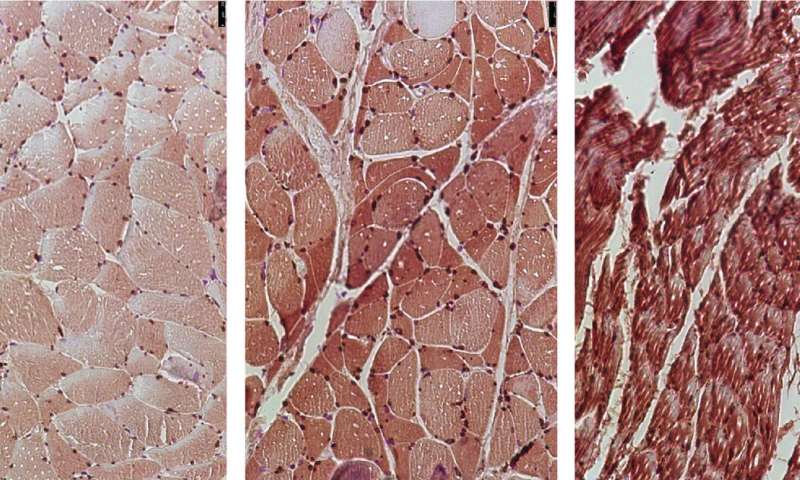
Researchers at the University of Nebraska Medical Center have identified a key cell signaling pathway that drives the devastating muscle loss, or cachexia, suffered by many cancer patients. The study, which will be published May 22 in the Journal of Experimental Medicine, suggests that targeting this pathway with a drug already in phase 2 clinical trials for diabetes could prevent this syndrome.
Cachexia reduces patients’ response to chemotherapy and can eventually result in respiratory or cardiac failure. It is thought to be the direct cause of death in up to one third of cancer patients. “However, there are no FDA-approved drugs to mitigate cancer-induced cachexia,” says Pankaj K. Singh, a professor from The Eppley Institute for Research in Cancer and Allied Diseases at the University of Nebraska Medical Center, Omaha. “There is therefore an urgent need to find more effective therapeutic targets against cancer cachexia.”
Muscle loss is particularly prevalent in patients with pancreatic cancer. Singh and colleagues found that the muscles of pancreatic cancer patients undergoing cachexia produce lower amounts of an enzyme called SIRT1. SIRT1 production was also reduced in mice with pancreatic cancer, and the researchers found that they could prevent these animals from undergoing cachexia by restoring the levels of this enzyme to normal.
Singh and colleagues determined that loss of SIRT1 causes muscle cells to produce increased amounts of an enzyme called NOX4 that generates toxic reactive oxygen species capable of inducing muscle degeneration. Treating mice with GKT137831, a drug that inhibits the NOX4 enzyme, prevented muscle loss and extended the life of mice with pancreatic cancer.
NOX4 levels were also elevated in patients undergoing pancreatic cancer-induced cachexia, suggesting that GKT137831, which is already in phase 2 clinical trials for diabetes and primary biliary cholangitis, could also be used to treat cancer-associated muscle loss.
Source: Read Full Article